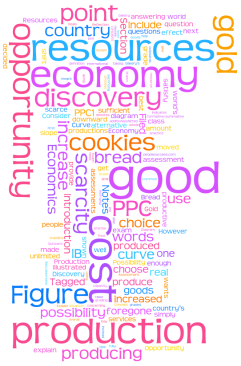4.4 Role of International Trade Data Response (1)
Posted on: February 15, 2012
“Doha trade round faces risk of collapse after 10 years of talks”
Question 1: Describe the role of the World Trade Organization.
The World Trade Organization (WTO) is an international body that sets the rules for global trading and resolves disputes between its member countries. It also hosts negotiations concerning the reduction of trade barriers between its member nation. By doing so, it tries to ensure that trade flows as smoothly, predictably and freely as possible. According to the WTO website, ten benefits of WTO are the following:
- The system helps promote peace
- Disputes are handled constructively
- Rules make life easier for all
- Freer trade cuts the costs of living
- It provides more choice of products and qualities
- Trade raises incomes
- Trade stimulates economic growth
- The basic principles make life more efficient
- Governments are shielded from lobbying
- The system encourages good government
Question 2: Using diagrams to aid your explanation, analyse the impact of imposing a tariff on an imported good.
Tariff—a tax placed upon imports—is a type of protection that a government imposes. As shown in Figure 1, tariff on imports shifts the world supply curve (SW) upwards to curve SW+T, raising the price of imports from P1 to P2. This gives domestic suppliers a comparative advantage, as it enables them to produce meat at a lower opportunity cost than world suppliers, which means that it gives the foreign supplies comparative disadvantage; the level of domestic production increases from 0Q1 to 0Q2, whereas the level of imports falls from Q1Q4 to Q2Q3.

(Figure 1) Tariff on Imported Goods
Question 3: Discuss why Brazil, China and India are reluctant to agree to the demands from the US and the EU to reduce the level of protection on their manufactured goods.
Brazil, china and India are reluctant to agree to the demands from the US and the EU to reduce the level of protection on their manufactured goods because if they decrease their protectionism, the world supply curve will shift downwards to curve SW+T2, lowering the price of imports from P2 to P3 (as illustrated in Figure 2). Cut in tariff still gives domestic suppliers a comparative advantage to world suppliers. Nevertheless, the level of domestic production decreases from 0Q2 to 0Q5, while the level of imports increases from Q2Q3 to Q5Q6. Seemingly, decrease in tariff hurts domestic suppliers of Brazil, China and India, for lower tariff allows world suppliers to export more, ceteris paribus. As competition increases in the market, some domestic suppliers, especially small suppliers, may be replaced by large world suppliers. This replacement could disallow the developing countries to become a major suppliers of manufactured goods, which means that they will not be able to become more developed countries. Also, the replacement could potentially lead to higher unemployment domestically. Also, Brazil, China, and India would be more dependent on world suppliers to provide meat for its country in the long run.

(Figure 2) Reduction of Tariff

Leave a comment